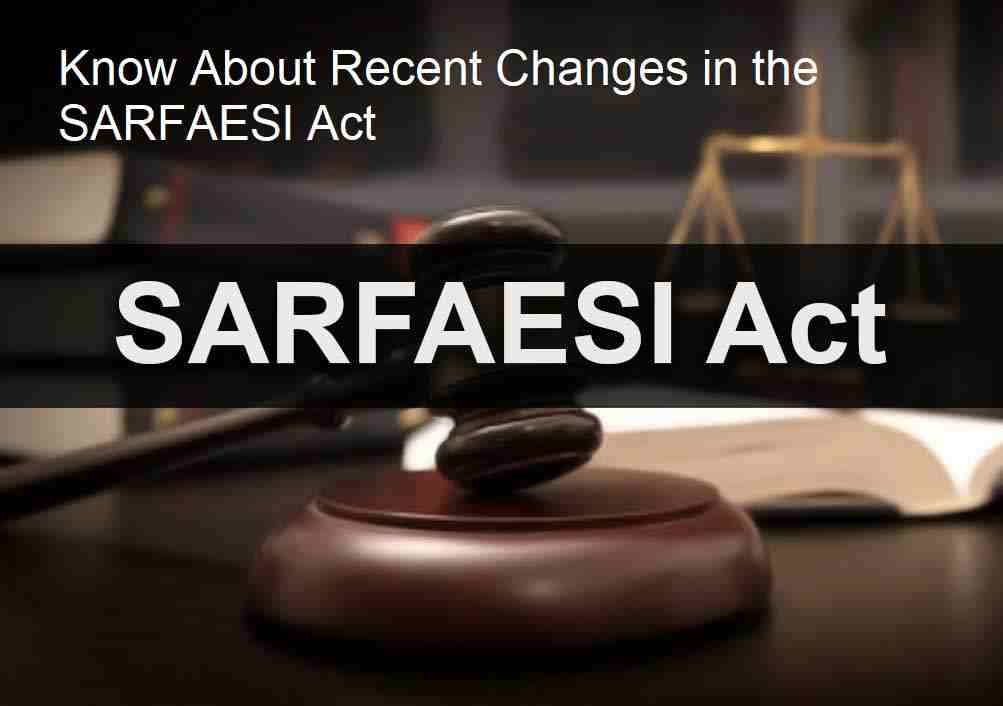In the dynamic and often complex world of finance, transparency and security are paramount. To ensure the smooth functioning of this vital sector and protect the interests of borrowers and lenders alike, India established the Central Registry of Securitisation Asset Reconstruction and Security Interest (CERSAI) in 2011.
CERSAI is a unique and multifaceted organization, playing a critical role in four key areas:
1. Securitization and Reconstruction of Financial Assets: CERSAI facilitates the securitization of financial assets, a process that allows lenders to pool their assets and sell them as investment securities. This enables them to diversify their portfolios and manage risk more effectively. Additionally, CERSAI assists in the reconstruction of stressed assets, providing a framework for lenders to manage non-performing loans and recover dues.
2. Security Interest Registry: This registry acts as a central repository for information on security interests created over various types of property, including immovable property (land and buildings), movable property (machinery, and vehicles), and intangible property (intellectual property). This transparency helps to prevent fraudulent transactions and protects the interests of secured creditors.
3. Central KYC Record Registry (CKYCRR): CERSAI established the CKYCRR to eliminate the need for repeated KYC (Know Your Customer) verification by various regulated entities in the financial sector. This centralized repository stores verified KYC information of individuals and entities, allowing regulated entities to access and rely on this validated data, streamlining processes and enhancing efficiency.
4. Regulatory Oversight: CERSAI acts as a central agency for collecting and analyzing data on transactions registered with it. This data provides valuable insights into trends in the financial sector, enabling regulatory authorities to monitor risks and develop appropriate policies
Benefits of CERSAI:
CERSAI's existence has significantly impacted the Indian financial landscape by:
Enhancing transparency: CERSAI's registries provide comprehensive and easily accessible information on financial transactions, promoting transparency and reducing the risk of fraud.
Facilitating credit access: By simplifying KYC procedures and providing lenders with access to reliable information on borrowers' financial standing, CERSAI has made it easier for individuals and businesses to obtain credit.
Improving risk management: CERSAI's data analysis capabilities enable financial institutions and regulatory authorities to better understand and manage risks associated with various financial instruments and transactions.
Promoting financial stability: By contributing to a more transparent and efficient financial system, CERSAI plays a vital role in ensuring the stability and resilience of the Indian economy.
| Type of Transaction |
Fees (Excluding Tax) |
| CERSAl Search |
₹10 |
| Creation or Modification of Security Interest |
₹50 (for loans up to ₹5 lakhs), ₹100 (for loans above ₹5 lakhs) |
| Reconstruction or Securitisation of Financial Assets |
₹500 |
| Satisfaction of Securitisation or Reconstruction of Financial Assets |
₹50 |
| Assignment of Receivables |
₹10 (for assignments of less than ₹5 lakhs), |
CERSAI Registration Process:
The process of registering with CERSAI varies depending on the type of entity involved. However, the general steps include:
1. Eligibility: Verify if your entity falls within the categories obligated to register with CERSAI.
2. Registration Form: Access the relevant registration form on the CERSAI website and fill it out accurately.
3. Documents: Gather and upload the required documents, which may include certificates of incorporation, proof of address, and PAN/TAN details.
4. Digital Signature: Obtain a valid digital signature certificate for signing the online forms.
5. Fee Payment: Pay the applicable registration fees online through the CERSAI website.
6. Processing and Verification: CERSAI will verify the submitted information and documents.
7. Registration Confirmation: Once approved, CERSAI will issue a unique registration number and login credentials for accessing the online portal.
Challenges and future of CERSAI:
While CERSAI has achieved significant success, it also faces certain challenges:
Data accuracy: Ensuring the accuracy and completeness of data submitted to the registries is crucial for their effectiveness.
Technological advancements: CERSAI needs to continuously upgrade its technology infrastructure to keep pace with the evolving financial landscape and emerging technologies.
Cybersecurity threats: With the increasing reliance on technology, CERSAI must remain vigilant and invest in robust cybersecurity measures to protect its data from cyber threats.
No matter these challenges, CERSAI's role in ensuring the stability and integrity of India's economic system is plain. because it keeps adapting and adapting to changing circumstances, CERSAI is poised to play an even more vital position in shaping the future of finance in India.
**In conclusion:**
CERSAI stands as a testament to India's dedication to fostering obvious, comfortable, and inclusive economic surroundings. using selling collaboration among various stakeholders within the monetary area, CERSAI paves the way for a stronger and more resilient economic gadget, ultimately contributing to the kingdom's monetary prosperity.
FAQ's
Q1. What does CERSAI stand for in banking?
Ans. CERSAI is the acronym for the Central Registry of Securitisation Asset Reconstruction and Security Interest of India.
Q2. Is the CERSAI search accessible to everyone?
Ans. Yes, the CERSAI search is open to anyone seeking information on property-related mortgage issues.
Q3. Is there a fee for conducting a CERSAI search?
Ans. Yes, a nominal fee of Rs 10 is charged for each CERSAI search.
Q4. Does CERSAI have an official website?
Ans. Yes, CERSAI maintains an official website at https://www.cersai.org.in/CERSAI/home.prg.
Q5. Is a digital signature required for CERSAI registration?
Ans. Yes, a digital signature is necessary for online registration. Alternatively, the Central KYC Record Registry (CKYCRR) can be used as well. Either option is mandatory for registration.
Q6. What are Cersai charges?
Ans. CERSAI charges are fees levied by the Central Registry of Securitisation Asset Reconstruction and Security Interest of India (CERSAI) for various services they offer, such as:
Search: Rs. 10 per search
Creation or modification of security interest:
* Rs. 50 for loans up to Rs. 5 lakhs
* Rs. 100 for loans above Rs. 5 lakhs
Reconstruction or securitization of financial assets: Rs. 500
These charges are used to maintain and operate the CERSAI registry and ensure the smooth functioning of the system.
Q7. Who pays Cersai charges?
Ans. The CERSAI charges are commonly paid through the borrower, although in a few cases, they will be shared with the lender. The particular party liable for the charge might be decided by using the terms of the loan settlement.
Q8. What is the fee for Cersai above 5 lakhs?
Ans. The fee for creating or modifying a security interest for loans above Rs. 5 lakhs is Rs. 100.
Q9. What is KYC with Cersei?
Ans. KYC (understand Your Consumer) is a system via which economic institutions verify the identity of their customers. Inside the context of CERSAI, KYC frequently refers back to the manner of verifying the identification of debtors once they sign their loan documents with CERSAI.
Q10. How can I check my Cersai details?
Ans. You could take a look at your CERSAI info with the aid of engaging in a public search on the CERSAI internet site. For this, you'll want to provide your name, PAN range, and different identifying data.
Q11. Why is Cersai done?
Ans. CERSAI was established to create a central registry for recording information about security interests created over financial assets. This enables to defense of the hobbies of each creditor and debtor through making sure that there may be a clear and public document of all such transactions.
Q12. When was Cersai started?
Ans. CERSAI was established in 2002 under the Securitisation and Reconstruction of Financial Assets and Enforcement of Security Interest Act, 2002 (SARFAESI Act).
Q13. What is the penalty for delayed registration of Cersei?
Ans. The penalty for delayed registration of Cersai is a fine of Rs. 1,000 for each day of delay.
Q14. How do I open Cersai?
Ans. CERSAI is not something that individuals can "open". It is a central registry that is accessible to both lenders and borrowers. If you are a borrower, you will likely not need to interact with CERSAI directly. Your lender will be responsible for registering the necessary information with CERSAI.
Q15. Which DSC is required for Cersai?
Ans. The specific DSC (Digital Signature Certificate) required for CERSAI will depend on the type of user and the transaction being performed. For individual borrowers, a Class 3 DSC issued by a licensed Certifying Authority (CA) is generally sufficient. However, lenders and other entities may require a Class 2 DSC.
Q16. Is Cersai compulsory for vehicles?
Ans. CERSAI registration is currently not mandatory for vehicles. However, it is endorsed, as it may assist in protecting the interests of both creditors and debtors in the event of a mortgage default.
Q17. What is the minimum amount for Sarfaesi?
Ans. SARFAESI (Securitisation and Reconstruction of Financial Assets and Enforcement of Security Interest Act) can be invoked for loans of any amount. However, it is typically used for larger loans where the default amount is significant


